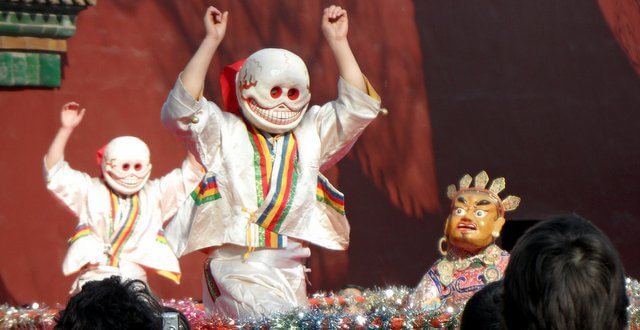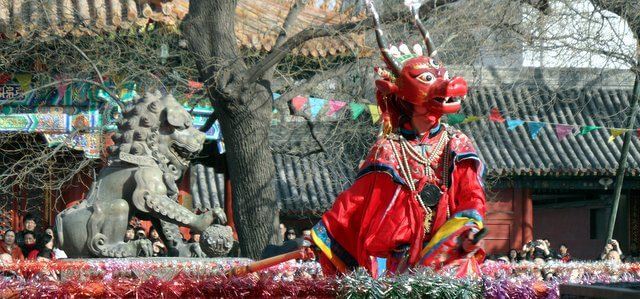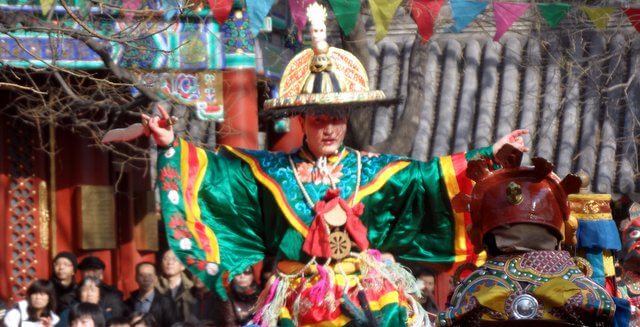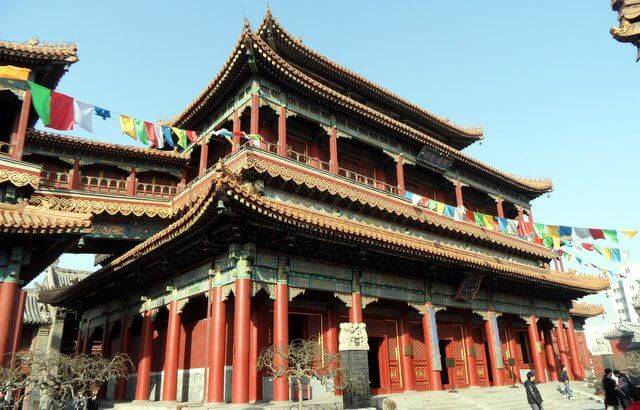
Buzha Dance
For Buddhists the last eight days of the Lunar Spring Festival are celebrated as the Dayuan Ritual, or Ritual of Great Vows. For the first five days the lamas (priests) of the YongHe Temple chant sutras, but on the last day 3-4000 people come to watch the Buzha dance.

Dressed as colourful demons or wearing skull masks the priests dance to the crashing sounds of traditional Tibetan instruments. The idea of the dance is to exorcise ghosts for the coming year and climaxes with the beheading of a devil.

After the music has died down the lamas burn the devil on a fire, and with the completion of the ceremony the world is at peace for another twelve months. Now the monks start chanting and throw bags of blessed fruits and sweets to the crowd, at which point the peaceful atmosphere is broken by the aggressive scramble to grab free stuff.
With everyone else involved in the scuffles raging in the temple courtyard we took the opportunity to look round the rest of the temple in peace.
The Yonghe Temple’s full title is the ‘Palace of Peace and Harmony Lama Temple’ or Yonghe Lamasery, but most people know it as the Lama Temple. It was started in 1694 and became a refuge for Tibetan leaders. Over time it evolved into the national centre of Yellow Buddhism and is now one of the largest and most important Tibetan monasteries in the world.

The Yonghe Temple







Pingback: What to Do in Beijing - Travel Tips for Beijing, China